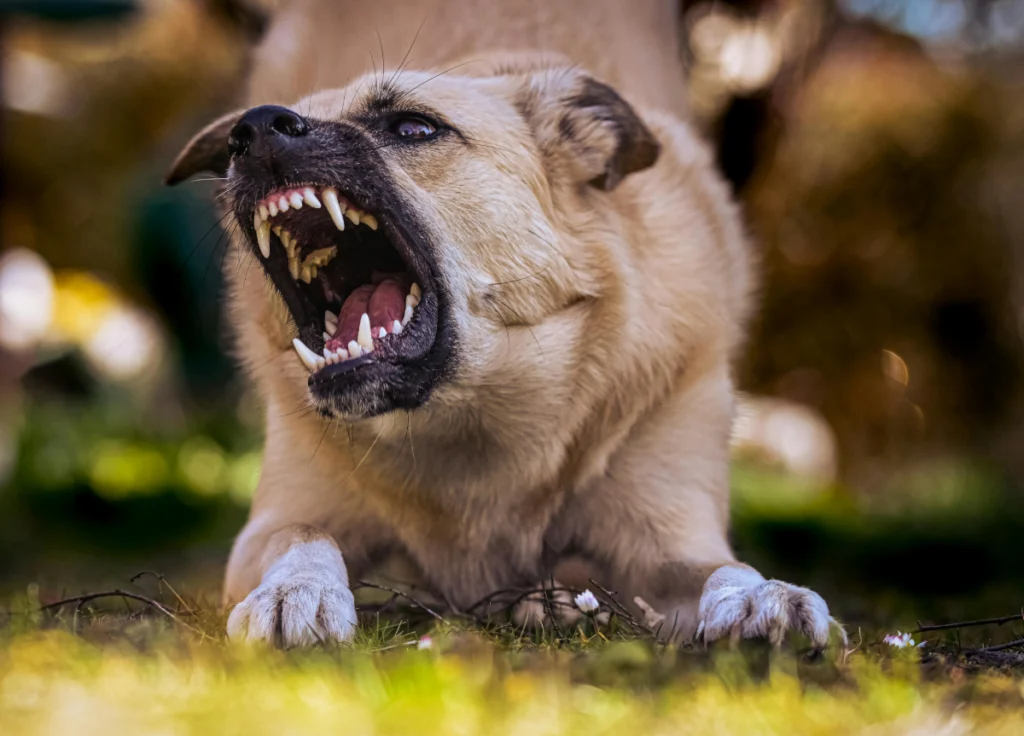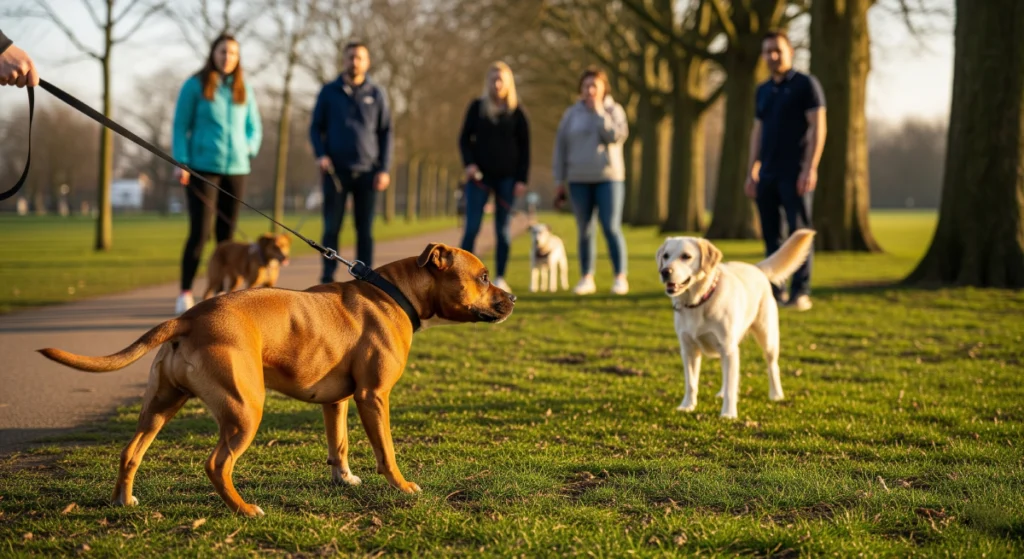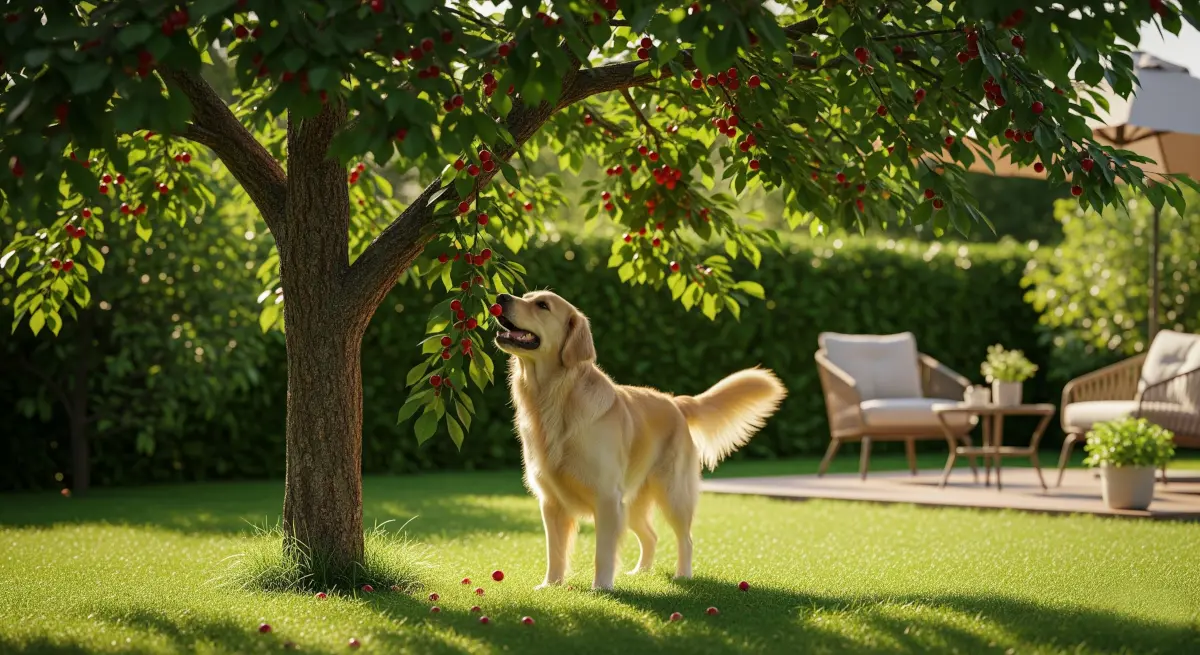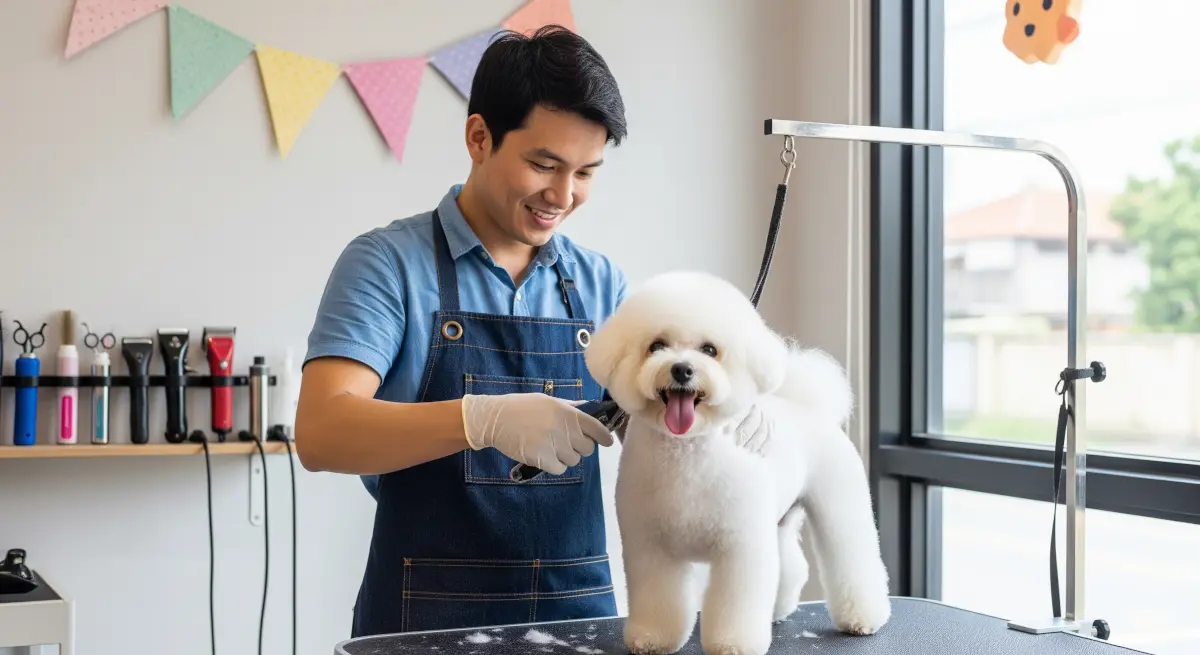Dogs that are aggressive towards other dogs can turn daily walks into stressful experiences and make pet ownership feel overwhelming. If you’re dealing with a dog that shows aggression toward other dogs—or worse, both dogs and people—you’re not alone. Studies show that dog aggression is one of the leading behavioral concerns among pet owners in the United States, affecting millions of households nationwide.
Understanding why your dog displays aggressive behavior is the first step toward creating a safer, happier environment for everyone involved. Whether your furry friend is showing early warning signs or has already escalated to more serious behaviors, this comprehensive guide will equip you with practical strategies, expert insights, and actionable solutions to address canine aggression effectively.
From identifying the root causes and recognizing warning signs to implementing safe management techniques and knowing when to seek professional help, we’ll cover everything you need to know about handling dogs that are aggressive towards other dogs. Let’s dive into this essential information that could transform your relationship with your pet and restore peace to your daily routine.
Table of Contents
- Understanding Dog Aggression: The Basics
- Common Causes of Dog-to-Dog Aggression
- Recognizing Warning Signs and Body Language
- When Aggression Extends to People
- Practical Management Strategies at Home
- Training and Socialization Approaches
- When to Seek Professional Help
- Prevention and Long-term Success
- Frequently Asked Questions

Understanding Dog Aggression: The Basics
Dog aggression isn’t a character flaw or a sign of a “bad” dog—it’s a complex behavioral response that stems from various underlying factors. When we talk about dogs that are aggressive towards other dogs, we’re describing animals that use threatening or harmful behaviors to communicate discomfort, fear, or territorial instincts.
Aggression exists on a spectrum, from subtle warning signals like stiff body posture to more obvious displays like growling, snapping, or biting. Understanding this progression is crucial for pet owners because early intervention at the warning stage can prevent escalation to dangerous behaviors.
It’s important to note that aggression is not breed-specific. While certain breeds may have been historically bred for guarding or protection work, any dog can develop aggressive tendencies based on their individual experiences, health status, and environment. The key is recognizing that aggressive behavior is often your dog’s way of communicating that something is wrong or that they feel threatened.
Common Causes of Dog-to-Dog Aggression
Fear and Anxiety
Fear-based aggression is one of the most common reasons dogs become reactive toward other dogs. This type of aggression typically develops when a dog feels cornered, threatened, or unable to escape from a perceived danger. Dogs with fear-based aggression may have experienced traumatic encounters with other dogs, inadequate socialization during their critical puppy period, or may simply have a naturally anxious temperament.
Signs of fear-based aggression include trembling, attempting to hide behind their owner, showing the whites of their eyes, and displaying defensive body language before escalating to growling or snapping.
Territorial Behavior
Territorial aggression occurs when dogs feel the need to protect their space, resources, or family members from perceived intruders. This can manifest in various settings—from your front yard to your favorite walking route. Dogs displaying territorial aggression may be perfectly friendly in neutral locations but become reactive when they perceive other dogs as invading “their” space.
This type of aggression is often more intense near the dog’s home, car, or other areas they consider their territory. Understanding this can help owners manage situations more effectively by recognizing when their dog is likely to feel territorial.
Pain and Medical Issues
Physical discomfort can significantly impact a dog’s behavior and tolerance levels. Dogs experiencing pain from conditions like arthritis, hip dysplasia, ear infections, or dental problems may become more reactive and aggressive as a way to protect themselves from further discomfort.
If your previously social dog suddenly becomes aggressive toward other dogs, a veterinary examination should be your first step. Pain-related aggression often improves dramatically once the underlying medical condition is properly treated.
Poor Socialization
Dogs that missed critical socialization opportunities during their puppy years (typically between 3-14 weeks of age) may struggle with appropriate social interactions throughout their lives. These dogs often lack the social skills necessary to communicate effectively with other dogs, leading to misunderstandings and aggressive responses.
Poor socialization can also result from negative experiences during the socialization period, creating lasting associations between other dogs and fear or stress.
Resource Guarding
Some dogs become aggressive when they perceive other dogs as threats to valuable resources like food, toys, sleeping areas, or even their owner’s attention. This instinctive behavior stems from survival mechanisms but can become problematic in domestic settings.
Resource guarding can escalate quickly and may extend beyond dog-to-dog interactions to include aggressive behavior toward humans who approach during meal times or when the dog has a valued item.
Recognizing Warning Signs and Body Language
Learning to read your dog’s body language is essential for preventing aggressive incidents and keeping everyone safe. Dogs typically provide multiple warning signals before resorting to biting, and recognizing these early signs allows for immediate intervention.
Early Warning Signs
The earliest signs of discomfort or stress are often subtle and may include:
- Lip licking when not eating or drinking
- Yawning when not tired
- Turning the head away from the other dog
- Freezing or becoming very still
- Excessive panting when not hot or after exercise
- Displacement behaviors like sudden scratching or sniffing the ground
Escalating Warning Signs
As stress increases, dogs may display more obvious warning signals:
- Stiff, rigid body posture
- Raised hackles (hair standing up along the back and neck)
- Direct, intense staring
- Growling or rumbling sounds
- Showing teeth or lifting lips
- Tail held high and stiff (different from happy tail wagging)
- Forward-leaning posture
The Aggression Ladder
Understanding the progression of aggressive behavior helps owners intervene at appropriate times. The typical escalation pattern includes:
- Subtle stress signals (lip licking, yawning)
- Moving away or avoidance
- Freezing or stiffening
- Staring
- Growling
- Showing teeth
- Snapping without contact
- Biting with varying intensity
Each level represents an opportunity for intervention before the situation escalates further.
When Aggression Extends to People
When dealing with my dog is aggressive to people and dogs help situations, the complexity and safety concerns increase significantly. Dogs that show aggression toward both other dogs and humans require immediate attention and professional intervention.
This dual aggression pattern often indicates deeper underlying issues such as:
- Generalized fear or anxiety disorders
- Traumatic experiences affecting trust in all interactions
- Neurological conditions affecting behavior
- Severe pain or medical conditions
- Genetic predispositions combined with environmental factors
The emotional toll on families dealing with dogs aggressive to both people and other animals can be overwhelming. Owners often experience guilt, fear, and social isolation as they struggle to manage their pet’s behavior while keeping everyone safe.
In these cases, professional help isn’t just recommended—it’s essential for the safety of your family, your community, and your dog’s wellbeing.
Practical Management Strategies at Home
Creating a Safe Environment
When wondering what to do with an aggressive dog, start by managing their environment to reduce stress and prevent incidents. This includes:
Avoiding Trigger Situations: Identify specific circumstances that provoke aggressive responses and temporarily avoid them while working on training. This might mean walking at different times, choosing less crowded routes, or avoiding dog parks entirely.
Using Safety Equipment: Invest in proper equipment including a well-fitted basket muzzle for high-risk situations, a sturdy harness or head collar for better control, and a strong, non-retractable leash. These tools aren’t punishment—they’re safety measures that allow your dog to participate in necessary activities while keeping everyone protected.
Establishing Routines: Predictable daily routines help reduce anxiety and stress. Feed your dog at consistent times, maintain regular exercise schedules (in safe environments), and create calm, quiet spaces where your dog can retreat when feeling overwhelmed.
Management During Walks
Walking an aggressive dog requires strategic planning and constant awareness:
- Choose walking times and routes with minimal dog traffic
- Maintain adequate distance from other dogs (this distance varies by individual dog)
- Use positive reinforcement when your dog notices other dogs but remains calm
- Have an escape plan—know where you can go if you encounter an unexpected situation
- Consider using a front-clip harness or head collar for better control
Home Safety Measures
Secure your property to prevent escape and unwanted encounters:
- Ensure fencing is adequate height and has no gaps
- Use privacy fencing or barriers to reduce visual triggers
- Install secure latches on gates
- Create a designated safe space inside your home
- Supervise all interactions with visitors
Training and Socialization Approaches
Positive Reinforcement Training
The foundation of working with aggressive dogs is positive reinforcement training. This approach focuses on rewarding desired behaviors rather than punishing unwanted ones. Punishment can increase fear and aggression, making the problem worse.
Key training principles include:
- Reward calm, non-reactive behavior around triggers
- Use high-value treats that your dog finds irresistible
- Keep training sessions short and positive
- End sessions on a successful note
- Be consistent with commands and expectations
Desensitization and Counter-Conditioning
These techniques help change your dog’s emotional response to other dogs:
Desensitization: Gradually exposing your dog to the sight of other dogs at a distance where they remain calm, slowly decreasing the distance over time as your dog becomes more comfortable.
Counter-conditioning: Pairing the sight of other dogs with positive experiences like treats or play, helping your dog develop positive associations instead of fear or aggression.
This process requires patience and consistency, often taking weeks or months to show significant improvement.
Basic Obedience Commands
Strong foundation commands are essential for managing aggressive dogs:
- “Watch me” or “Focus”: Redirects attention to you instead of triggers
- “Leave it”: Helps disengage from fixation on other dogs
- “Stay” or “Wait”: Provides control in challenging situations
- “Come”: Essential for recall in emergency situations
- “Place” or “Go to bed”: Gives your dog a specific location to retreat to
When to Seek Professional Help
Recognizing when you need professional assistance is crucial for successful outcomes. Consider seeking help from a certified dog behaviorist or veterinary behaviorist when:
- Aggressive incidents are increasing in frequency or intensity
- Your dog has bitten another dog or person
- You feel unsafe handling your dog
- Family members are afraid of the dog
- Home management strategies aren’t showing improvement after several weeks
- The aggression appears suddenly in a previously social dog
- Multiple types of aggression are present
Types of Professional Help
Veterinary Behaviorists: Veterinarians with specialized training in animal behavior who can prescribe medication if needed and rule out medical causes.
Certified Dog Behavior Consultants: Professionals certified through organizations like the Certification Council for Professional Dog Trainers (CCPDT) who specialize in behavior modification.
Positive Reinforcement Trainers: Trainers who use science-based, humane methods and avoid dominance-based techniques that can worsen aggression.
What to Expect from Professional Help
A qualified professional will:
- Conduct a thorough behavior assessment
- Identify specific triggers and patterns
- Develop a customized behavior modification plan
- Teach you safe handling and training techniques
- Provide ongoing support and plan adjustments
- Recommend medical evaluation if appropriate
Prevention and Long-term Success
Early Socialization
For puppy owners, proper socialization during the critical period (3-14 weeks) is the best prevention for future aggression problems. This includes:
- Positive exposure to various dogs, people, and environments
- Puppy classes with qualified instructors
- Controlled interactions with well-socialized adult dogs
- Positive experiences in different locations and situations
Ongoing Management
Successfully managing dogs that are aggressive towards other dogs is typically a long-term commitment that requires:
- Consistent training and reinforcement
- Regular veterinary check-ups to rule out medical issues
- Continued environmental management
- Patience and realistic expectations
- Celebration of small improvements
Building Confidence
Many aggressive dogs benefit from confidence-building activities:
- Trick training and mental enrichment
- Structured exercise appropriate for the individual dog
- Positive social experiences when possible
- Consistent routines that provide security
Frequently Asked Questions
Can aggressive dogs be completely cured?
While some dogs can overcome their aggressive tendencies completely, others require lifelong management. The key is significant improvement in behavior and quality of life for both the dog and family. Many dogs with aggression issues can learn to coexist peacefully with proper training and management, even if they never become social butterflies. Success should be measured by reduced stress, fewer incidents, and improved relationships rather than complete elimination of all reactive behaviors.
Is it safe to have an aggressive dog around children?
Dogs with aggression issues require careful supervision around children, regardless of whether the aggression is directed toward other dogs or people. Children’s unpredictable movements and high energy can trigger aggressive responses in already reactive dogs. If you have children and an aggressive dog, professional help is essential to assess the situation and develop appropriate safety protocols. In some cases, rehoming may be the safest option for everyone involved.
Should I use a shock collar or dominance training for my aggressive dog?
No. Punishment-based training methods, including shock collars, alpha rolls, or dominance techniques, can worsen aggression by increasing fear and stress. These methods may suppress warning signals like growling, making the dog more unpredictable and dangerous. Modern animal behavior science strongly supports positive reinforcement methods as the safest and most effective approach for treating aggression.
How long does it take to see improvement in an aggressive dog?
The timeline for improvement varies greatly depending on the dog’s age, the severity of the aggression, underlying causes, and consistency of training. Some dogs show initial improvements within weeks, while others may take months or years to achieve significant progress. Factors that influence success include the dog’s individual temperament, the owner’s commitment to training, and whether professional help is involved. Patience and realistic expectations are crucial for long-term success.
Can medication help with dog aggression?
In some cases, anti-anxiety medications prescribed by a veterinarian or veterinary behaviorist can be helpful as part of a comprehensive treatment plan. Medication alone is rarely a complete solution but can reduce anxiety levels enough to make training more effective. This is particularly true for dogs with severe fear-based aggression or underlying anxiety disorders. Always consult with a veterinary professional before considering medication options.
What should I do if my dog bites another dog or person?
If a bite incident occurs, prioritize immediate safety and medical care for any injured parties. Document the incident, including circumstances, injuries, and witness information. Contact your veterinarian and a qualified dog behaviorist immediately. You may also need to report the incident to local animal control authorities, depending on your local laws. Take the incident seriously and implement immediate safety measures while seeking professional help to prevent future occurrences.
Dealing with dogs that are aggressive towards other dogs can feel overwhelming, but remember that you’re not alone in this journey. Thousands of pet owners successfully manage and improve their dogs’ aggressive behaviors every year through patience, consistency, and proper guidance. The key is understanding that aggression is often your dog’s way of communicating fear, pain, or discomfort—not a reflection of their character or your abilities as a pet owner.
Whether you’re dealing with mild reactivity or more serious aggressive behaviors, the strategies outlined in this guide provide a foundation for creating positive change. Remember that progress may be slow, and setbacks are normal parts of the process. Celebrate small victories, maintain realistic expectations, and don’t hesitate to seek professional help when needed.
Your commitment to understanding and helping your dog through their behavioral challenges demonstrates the deep bond between you and your pet. With time, patience, and the right approach, many dogs with aggression issues can learn to live more peaceful, happy lives alongside their families. Take it one day at a time, prioritize safety above all else, and trust that positive change is possible with dedication and proper support.





